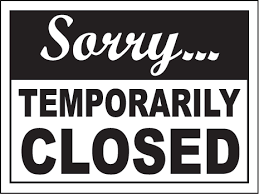Today’s blog post is a guest post from the one and only Kirk Adams.
Even though life has been slowly returning to normal, it’s still not comfortable to be out in public spaces, especially if you have to head indoors. Golf courses are open again but many of the ways we prepared for the game of golf and our bodies are still closed down.
Unfortunately, this forces us to spend most of our time at home reducing our activity levels which cannot allow for sufficient practice. This is a recipe for poor play and increases our risk of injury. Fortunately, with a little guidance and creativity, you can get your body and game back from the comfort of your own home.

One of the best ways to improve at golf is to work with a teaching professional who can help you understand the game, improve your swing, and learn how to lower your handicap. If you are unable to meet with them due to the constraints of COVID-19, reach out to see if they are doing remote coaching or check their social media page to see if they are posting valuable tips.
If you haven’t played in a few months, it’s important to put in the reps as you would on the range and practice green so your body is prepared to get back on the course. Large jumps in activity levels put you at an increased risk of injury, so follow this advice to avoid this common pitfall:
- To work on your short game, put a chipping net in your backyard or basement and you’ll be ready to save yourself tons of shots around the green.
- Use a putting mat, or your carpet, to reduce your 3-putts and improve your confidence on those three-footers.
- Put up a hitting net or, if you’re really lucky, build yourself an indoor simulator to groove your full swing. Don’t forget, you want to build up volume, so start with 15-25 and progress to 30-40 full swings each of those days.
This not only prepares the hips and spine for the forces placed on them, but the impact on the ground will help prepare the hands, wrists, and elbows.
Finally, let’s talk about working out at home.
I like to break golf fitness down into a few different categories that affect how we play – mobility, strength, speed, and endurance. We can compare this to the different clubs in our bag. We all have strengths and weaknesses in our game, and the same goes for our fitness.
Just like when we practice for the game of golf, it is crucial to prioritize the areas of our fitness that need the most work. While many of us can’t get to our favorite gyms or work with our usual trainers, ask them if they are offering any virtual training options for either group or personal training. If they aren’t, maybe they can refer you to a gym or personal trainer who is.
If you’re struggling to find assistance, reach out to me. I would be happy to share with you the different virtual training options we are offering at Ben Shear Golf.
Let’s address mobility first since most of us are spending more time at home and are less active than usual, this area may be suffering the most right now. At a minimum, if you find yourself at your desk or on your couch more than usual, set an alarm to remind you to get up, move around, and change position at least every 30 minutes.
Stretches and exercises that focus on the mobility of the hips and spine are key to helping you play your best and stay injury-free. Try to do a few of these every day.
Cat/Camel Series
Hip 90/90 PAILs/RAILs
Couch Stretch
Strength is another significant fitness quality that we should address during this time. Even though most of us don’t have access to the variety and quality of equipment found at our gym, you can still maintain and even improve strength with minimal equipment at home.
Get creative with your equipment. If you don’t have a lot of traditional gym equipment at home, you can substitute for common household items that you have around the house like towels, chairs, backpacks, and gallon jugs.
You don’t always need heavyweights to get stronger. You can make a lightweight feel heavier by using tempo training.
Two of my favorite ways to program tempo are by pausing at the midpoint of a repetition (think the bottom position of a pushup), or by slowing down the eccentric portion of a repetition (think lowering your body towards the floor on a pushup). A 3-10 second pause, or eccentric, will quickly make you cry for mercy even when utilized with a lightweight.
Finally, it’s essential to cover all the major categories of strength exercises. During each workout, or by the end of the week, make sure that you’ve completed exercises for your legs (Squats, Deadlifts, Split Squats), upper body pulling (Rows, Chinups), upper body pushing (Pushups, Overhead Presses), and core (Planks, Glute Bridges, Anti-Rotation).
Goblet Front Squats
You can substitute a backpack with household items in it as weight if you don’t have access to dumbbells or kettlebells.
Single-Leg Deadlift
Bent Over Rows
Push-up to T-Position
Plank with Leg Lifts
We all want to hit the ball farther. Speed and power are qualities that you can train at home as well. One way is to use more traditional gym exercises like various jumps, medicine ball throws, and short sprints.
There are also a lot of great speed training aids out there, like SuperSpeed Golf, that you can use to increase your swing speed. SuperSpeed Golf has a very detailed training program on their website that you can follow at home.
Don’t want to go out and spend money on training aids? You can use your own golf clubs to improve clubhead speed. Use your driver and take 3-5 swings as fast as you can. Pretend that you don’t care where the ball goes. You just want it to go really far. Wait 2 minutes and then do the same thing on your non-dominant side (left-handed swings if you’re a right-handed golfer). Yes, it will feel silly the first time! Do 2-3 sets on each side, 2-3 days per week and you’ll be ready to outdrive your buddies in no time.
Golf is not a sport that requires a great deal of conditioning. It’s not often that we hit a poor shot because we can’t catch our breath. However, if you’re like me right now, not as active as usual then working on your endurance may pay dividends when we get back on the course.
If you find that you often drop a few shots at the end of your rounds because you’re physically or mentally tired, it could be a food or hydration issue which is a topic for another article. This could be a great time to turn a weakness of your game into a strength.
Finally, if you typically walk the course or would like to continue to be able to walk the course, especially if your favorite course is a tough walk, this will be valuable for you. If you have cardio equipment at home, like a treadmill or elliptical, that is a great option. Try to spend 20-60 minutes at a pace that would allow you to hold a labored conversation 2-3 days per week. Bikes are fine, but that means we’re spending even more time in a seated position. Maybe the best option is to go outside for a walk. You can even take your golf bag for a walk, or carry a backpack with some light weights in it if possible.
Take advantage of the extra time you may have due to COVID-19 and get your body primed for golf now. Hopefully, these ideas spark a change and help you make the most during these terrible circumstances.
Want to take your golf fitness to the next level? Sign up for a FREE Discovery Call to learn how I can help you go low!
More about Kirk
Kirk is the Head of Fitness at Ben Shear Golf in Scotch Plains, NJ. Formerly the Head Strength and Conditioning Coach of the Penn State Men’s and Women’s Golf Team and the Director of Fitness at Golf & Body NYC, Kirk was selected in 2020 as one of Golf Digest’s Top 50 Golf Fitness Trainers.

STAY UPDATED
[contact-form-7 id=”147″ /]

